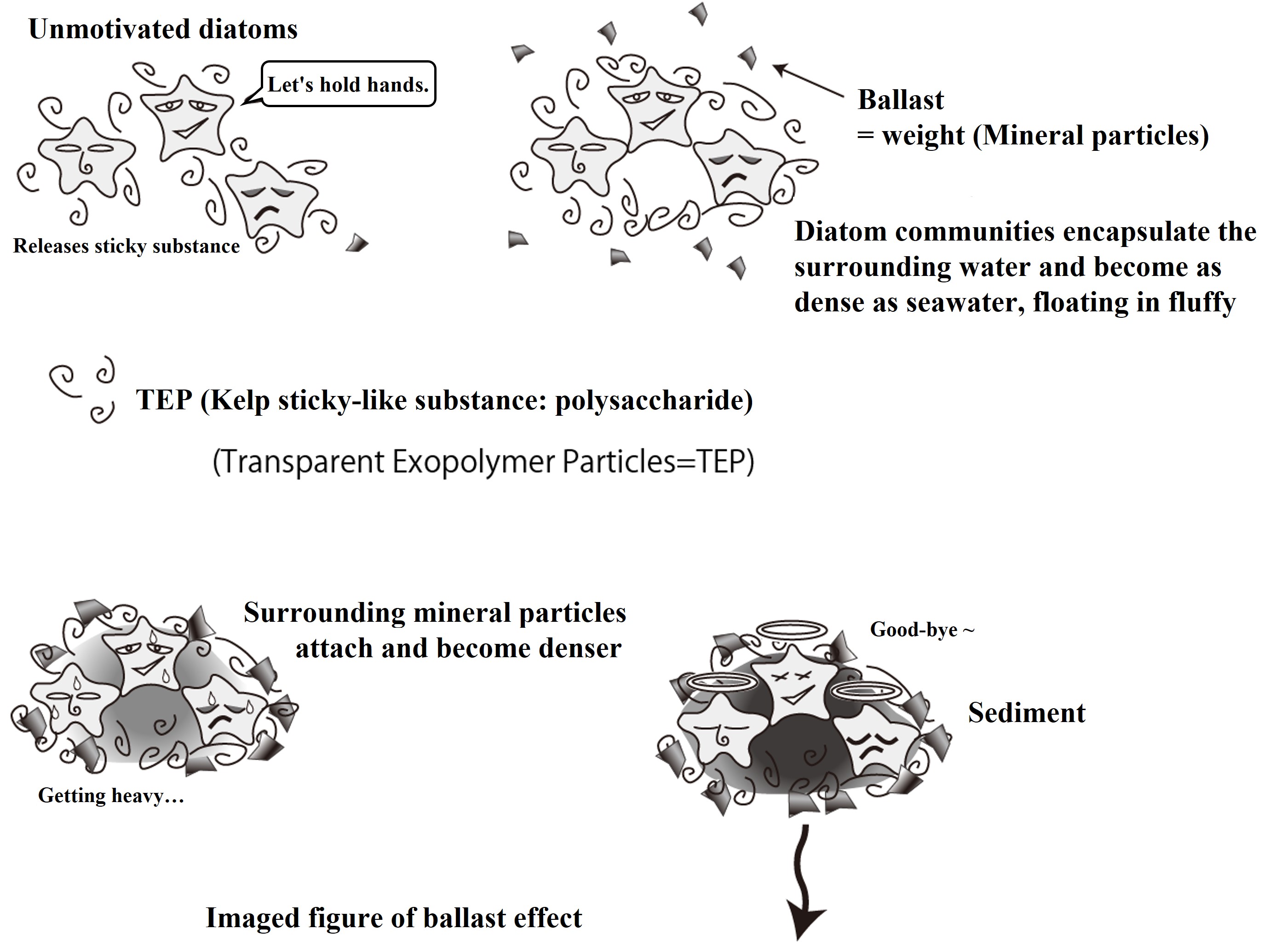Sedimentation of particles (ballast effect)
Incidentally, it has also been proposed that the attachment of many fine mineral particles to huge organic particles that have been floating fluffy has the effect of densifying the huge organic particles and promoting their sedimentation. This is called the ballast effect because the mineral particles act as a weight (= ballast).
("Ballast" is a nautical terms. Ballast water is added to the tanks as a weight to keep the ship from floating too much.)
A simple equation should be able to derive how much ballast effect is created when how many mineral particles are attached. Once you know the Stokes sedimentation equation, you can do a simple numerical simulation of oceanic mass transport and broaden your interest. Let's do the estimation for each.

The reason why the ballast effect is attracting so much attention in oceanography is that it is a mystery why fluffy drifting phytoplankton can sediment. Diatoms release polysaccharides similar to the sticky substance found in kelp. This sticky substance is floating in the seawater in large quantities and is called Transparent Expolymer Particle (TEP). If this condition is maintained, the sticky diatoms will drift on the ocean surface for a long time. In reality, however, the diatoms are sedimenting. Although individual mineral particles cannot have a sedimentation rate, they are in fact sedimenting at a considerable rate.
It is also imagined that when various particulates attach to the TEP and become huge (presumably including diatom cells) and settle all at once, they can become marine snow.
TEP(Transparent Exopolymer Particle): TEP is made of acidic polysaccharides. As explained below, algae are thought to produce, clothe, and shed TEP.
Acid polysaccharides: Many algae produce acid polysaccharides. This is the sticky surface of kelp. Why does it produce stickiness? There are several theories. One is protection from the outside world. Seawater contains many viruses and bacteria that are pathogens. It prevents them from entering the body. Regularly shedding the sticky substance will help keep the body clean. Another is to attach fine particles in seawater to make it easier for them to absorb nutrients. This is an effective strategy for nutrient-poor phytoplankton in the open ocean. However, we do not know the details.

